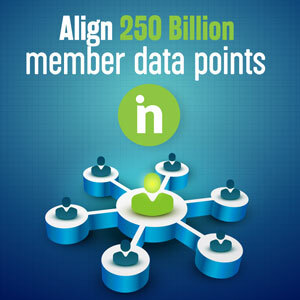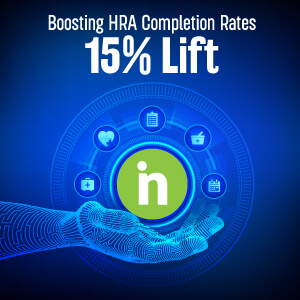3 Steps to Better CAHPS Scores Through Insight and Action
It is no secret that the Centers for Medicare & Medicaid Services (CMS) has placed increased weight on satisfaction and experience measures for Medicare Advantage plans. Member experience now accounts for 43% of the overall Star Rating (up from 37% in 2021) and is slated to account for 57% of the rating by 2023.1 CMS understands that a consumer-centric, member-first mindset will drive industry-wide value by improving how care is delivered and ensuring that overall health and wellness is prioritized. CMS Star Ratings are often a deciding factor when consumers compare plans with similar benefits and cost. Therefore, ensuring high Consumer Assessment of Healthcare Providers & Systems (CAHPS®) survey scores, currently the primary method for calculating member satisfaction, is critically important. However, the anonymous nature of the CAHPS survey process (e.g., not knowing which members were targeted, who responded, or how they responded) and uncertainty surrounding specific care “gaps” to close make it difficult for health plans to know specifically where to focus their CAHPS improvement efforts.It is no secret that the Centers for Medicare & Medicaid Services (CMS) has placed increased weight on satisfaction and experience measures for Medicare Advantage plans. Member experience now accounts for 43% of the overall Star Rating (up from 37% in 2021) and is slated to account for 57% of the rating by 2023.1 CMS understands that a consumer-centric, member-first mindset will drive industry-wide value by improving how care is delivered and ensuring that overall health and wellness is prioritized. CMS Star Ratings are often a deciding factor when consumers compare plans with similar benefits and cost. Therefore, ensuring high Consumer Assessment of Healthcare Providers & Systems (CAHPS®) survey scores, currently the primary method for calculating member satisfaction, is critically important. However, the anonymous nature of the CAHPS survey process (e.g., not knowing which members were targeted, who responded, or how they responded) and uncertainty surrounding specific care gaps to close, make it difficult for health plans to know specifically where to focus their CAHPS improvement efforts.
At Insightin Health, we’ve identified three steps that are crucial to improving CAHPS scores:
1. Connect your data and put it to work
Member satisfaction with their provider and the health plan experience cannot be understood through a one-time analysis; it requires ongoing review and evaluation. The good news is that with a base set of information pulled from data assets that are generally available within the health plan, you can get started quickly. Key assets include member demographics, chronic conditions, and social determinants of health (SDOH) data; historical mock survey responses; and, if available, member and/or provider experience scores. With this profile, you start to understand satisfaction levels and identify areas in need of attention.
It is also important to have the ability to easily connect other data sources that could be helpful in providing insight into the member care experience. This could include other health plan data such as call center recordings from member and provider services, appeals and grievance data, analytic models, care coordination data, and marketing engagement outcomes data; as well as additional demographic, provider, and public data sets. Every interaction, whether large or small, can tell you something about satisfaction and experience levels. Follow the example set by leading retailers like Apple, Google, and Netflix and work towards capturing data at every touchpoint, across all channels to generate a comprehensive member profile. Furthermore, your CAHPS improvement strategy should follow where the data leads rather than populate and drive a predefined concept.
2. Unlock member and provider insights to understand root issues
Impacting CAHPS requires you to identify the drivers behind the scores. To know which levers to pull, you need to understand what’s happening when your members interact with providers and with the health plan. Artificial intelligence and machine learning techniques should be applied to continually analyze member and provider data to uncover key attributes of both your satisfied and unsatisfied population segments. These data-driven insights can then be used in prediction models that can determine the likely satisfaction levels of members with similar attributes.
Once root issues are understood, interventions should be prioritized by determining which actions are most likely to have the most significant impact on members and the health plan. This will likely require some hypothesizing and market testing. For example, focusing on a large group of members with one common root issue (e.g., referral delays) may be the priority for one health plan while prioritizing outreach to members with multiple SDOH barriers may pay the biggest dividends for another.
3. Take action with personalized, omnichannel workflows
Finally, member interventions and outreach should be proactive and highly personalized. Member-level, data-driven Next Best Action recommendations can be implemented to solve for the root issues. For example, a health plan might automate a workflow to send an in-home test kit to members who have the benefit, are experiencing challenges getting a referral, and have issues with transportation. As plans address satisfaction issues, it is critical to include provider strategies. Consider the value created by pushing data about members who are likely to have trouble scheduling an appointment directly to the PCP’s electronic health record system to trigger outreach. As health plans continue their journey toward delivering a retail experience, it is also important to personalize content and engagement strategies for the various member segments and use a multi-channel approach to outreach.
Insightin’s inGAGE™ platform helps streamline these three steps to improving CAHPS scores. The platform centralizes data from a variety of sources – whether the information sits in your data warehouse or in vendor, partner, or provider systems – to provide a comprehensive view of each member. Using artificial intelligence and machine learning techniques to generate member insights based on this data, inGAGE™ allows health plans to use data-driven decisioning and Next Best Action logic to close care gaps, improve satisfaction, and improve lifetime member value. To learn more about how inGAGE™ can help your health plan, request a customized demo of CAHPS Predict here.
Carlton, Stephanie, et al. “New Stars Ratings for Medicare Advantage Prioritize Customer Experiences.” McKinsey & Company, 15 Oct. 2020, www.mckinsey.com/industries/healthcare-systems-and-services/our-insights/new-stars-ratings-formedicare-advantage-prioritize-customer-experiences.





